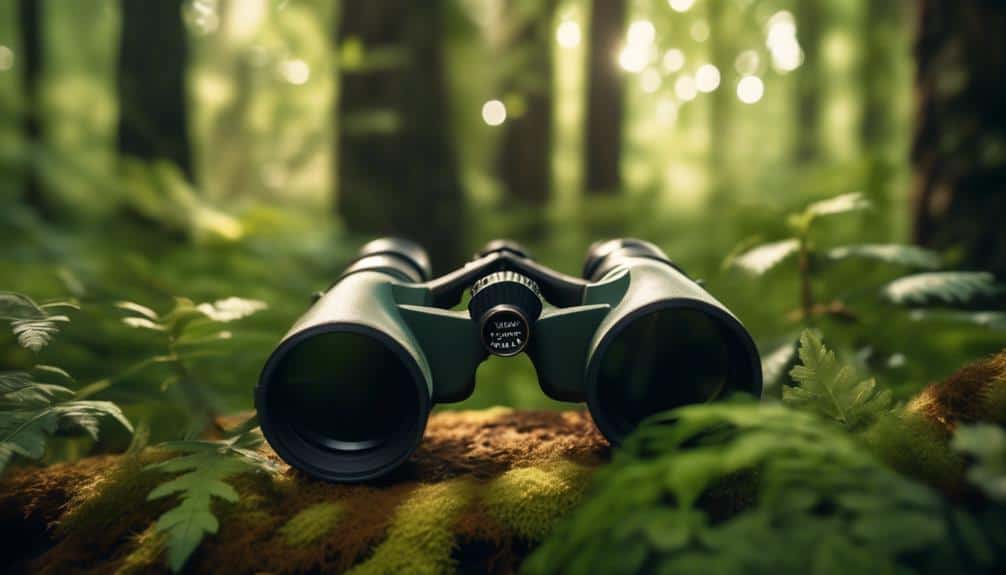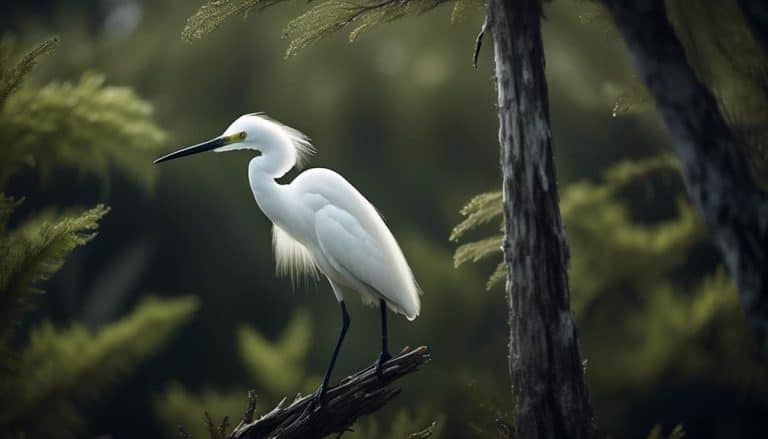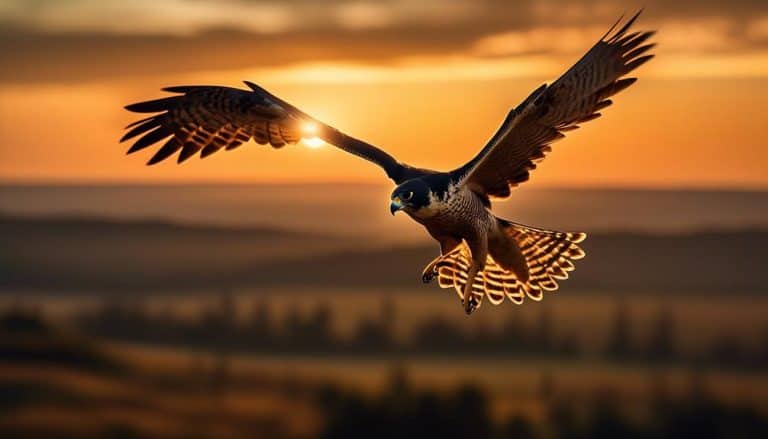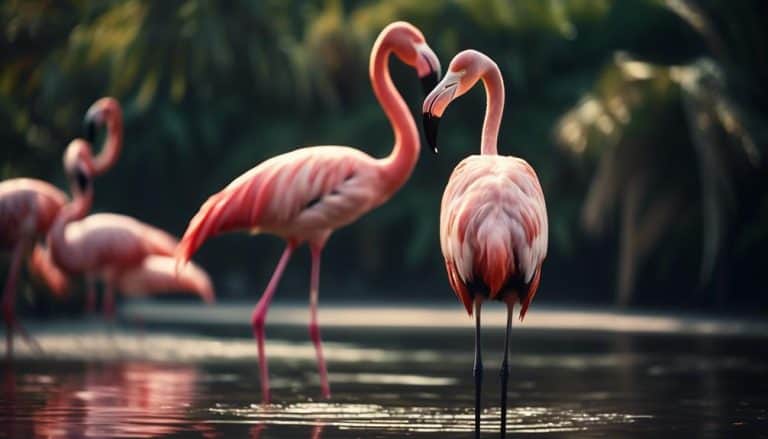As a birder, I was amazed to discover that nearly 50 million people in the United States alone participate in birdwatching activities each year. With such a large number of enthusiasts, it becomes crucial to have the right equipment to enhance our birding experience.
That's where optics come into play. Optics, such as binoculars and spotting scopes, not only bring birds closer but also allow us to observe their intricate details. But how do we choose the right optics? And what factors should we consider?
In this discussion, I will explore the world of optics for birding, uncovering the types available, factors to consider, effective usage techniques, and proper maintenance. So, let's embark on this journey together and discover the world of optics for birding.
Why Optics Matter for Birding
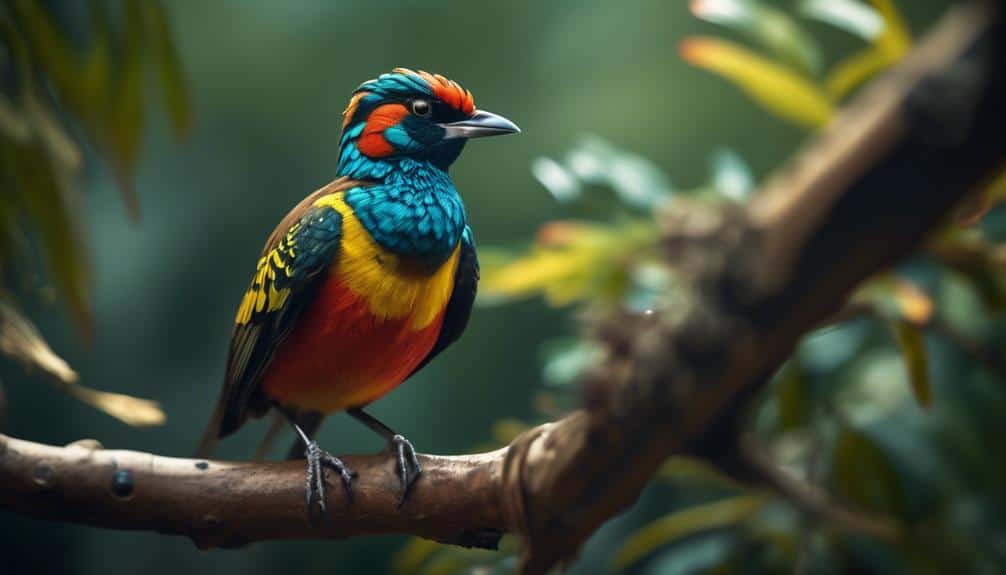
When birding, having the right optics is crucial for enhancing your ability to observe and identify birds with precision and clarity. Optics, such as binoculars and spotting scopes, play a significant role in birdwatching, allowing you to see details that would otherwise be missed by the naked eye.
One important aspect to consider when choosing optics for birding is magnification. The magnification level determines how much closer the bird will appear, making it easier to study its features and behavior. Higher magnification, such as 8x or 10x, is commonly recommended as it provides a closer view without sacrificing too much field of view.
Another feature that greatly benefits birders is image stabilization. When observing birds in their natural habitats, it can be challenging to keep the optics steady, especially when using high magnification. Image stabilization technology compensates for hand movements, resulting in a steadier and clearer view. This feature is particularly useful when observing birds in flight or during low-light conditions. By reducing image shake, image stabilization helps birders maintain focus on the bird and capture details that would otherwise be blurred.
Types of Optics for Birding
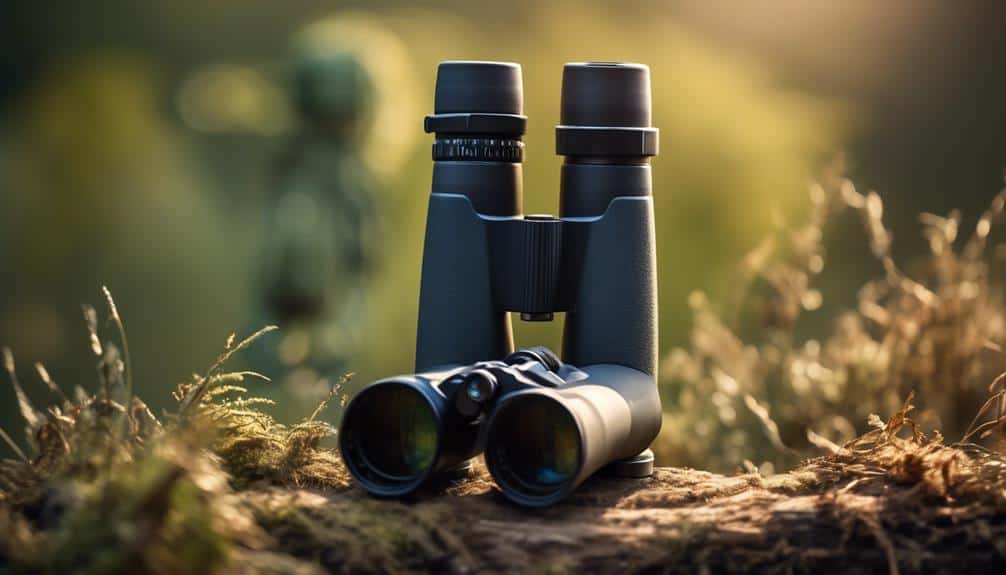
Having established the importance of optics in birding, let's now explore the various types of optics available for enhancing our birdwatching experience.
There are two primary types of optics that birders commonly use: binoculars and spotting scopes.
- Binoculars: Binoculars are handheld optical devices that enable birders to observe birds at a distance. They consist of two telescopes mounted side by side, allowing for a wider field of view and increased magnification. Binoculars come in various sizes and magnification powers, with 8x and 10x being the most popular choices among birders. They're lightweight, portable, and suitable for most birding situations.
- Spotting Scopes: Spotting scopes, also known as telescopes, are larger, more powerful optical instruments that provide a greater level of detail for bird observation. They're typically used when observing birds at long distances or in open habitats. Spotting scopes offer higher magnification, often ranging from 20x to 60x, and have a narrower field of view compared to binoculars. They're commonly mounted on tripods for stability and can be used in conjunction with digiscoping adapters for capturing high-quality bird photos.
Both binoculars and spotting scopes have their advantages and are essential tools for birding enthusiasts. The choice between the two depends on the specific birding needs, preferences, and the environment in which birding is taking place.
Factors to Consider When Choosing Optics
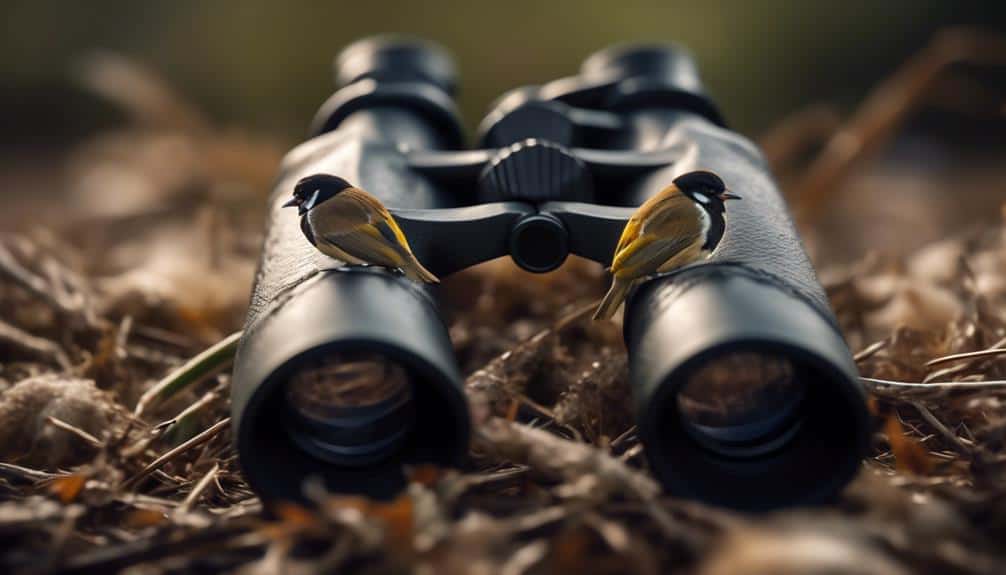
To make an informed decision when choosing optics for birding, it is crucial to consider several key factors that will greatly impact the overall birdwatching experience. One of the most important factors affecting birding experience is the magnification power of the optics. Choosing the right magnification is essential for getting a clear and detailed view of the birds.
When it comes to magnification, birders often debate between two options: higher magnification or wider field of view. Higher magnification allows for a closer look at the birds, enabling you to see intricate details such as feather patterns and color variations. On the other hand, a wider field of view provides a larger area to scan for birds, making it easier to locate them.
To help you make an informed decision, here is a table summarizing the advantages and disadvantages of different magnification powers:
| Magnification Power | Advantages | Disadvantages |
|---|---|---|
| 8x | Good for general birding, stable image, wider field of view | Less detail, harder to see small birds at a distance |
| 10x | More detail, better for long-range observation | Shaky image, narrower field of view |
| 12x | Exceptional detail, ideal for birders with steady hands | Image instability, difficult to track birds in motion |
Consider your personal preferences, birding environment, and budget when choosing the right magnification for birding. Remember, the ultimate goal is to enhance your birdwatching experience by capturing the beauty and behavior of these magnificent creatures.
How to Use Optics Effectively for Birding
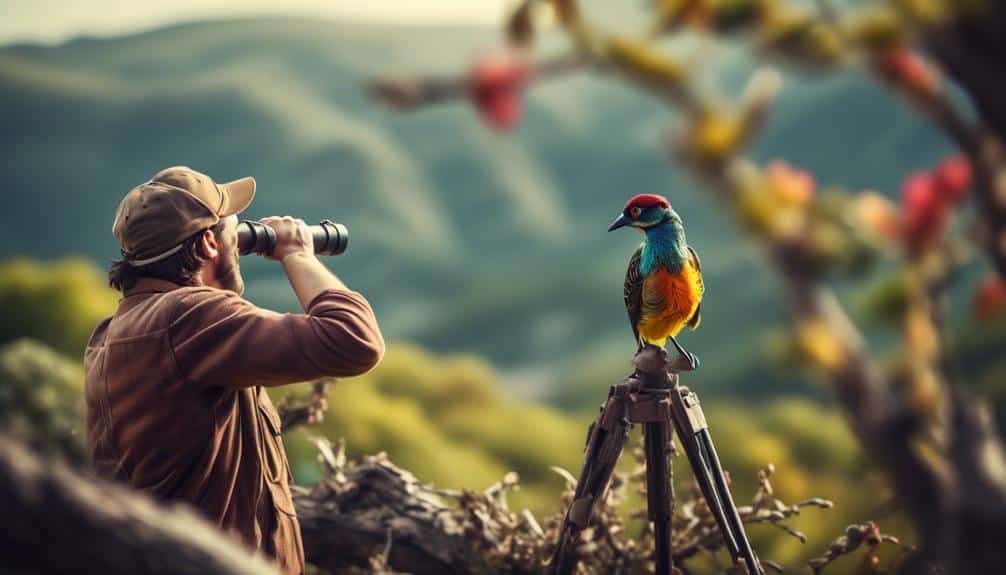
Considering the importance of optics in birding and the factors to consider when choosing them, it's crucial to understand how to effectively use these tools to enhance the birdwatching experience. To make the most out of your birding optics, follow these tips:
- Finding the best binoculars for birding: Invest in a good pair of binoculars that provide clear, sharp images and have a wide field of view. Look for binoculars with a magnification between 8x and 10x, as they strike a good balance between image stability and brightness.
- Tips for improving birdwatching skills: Practice using your binoculars before heading out into the field. Learn how to quickly focus on birds and adjust the diopter for your eyes. Also, try to develop good posture and stability while using your optics, as this will help reduce fatigue and improve your ability to spot and track birds.
- Utilize light and weather conditions: Take advantage of optimal lighting conditions for birding, such as early morning or late afternoon when the sun is lower in the sky. Pay attention to weather patterns, as birds are often more active during certain weather conditions like cloudy days or after rain showers.
Maintenance and Care for Optics
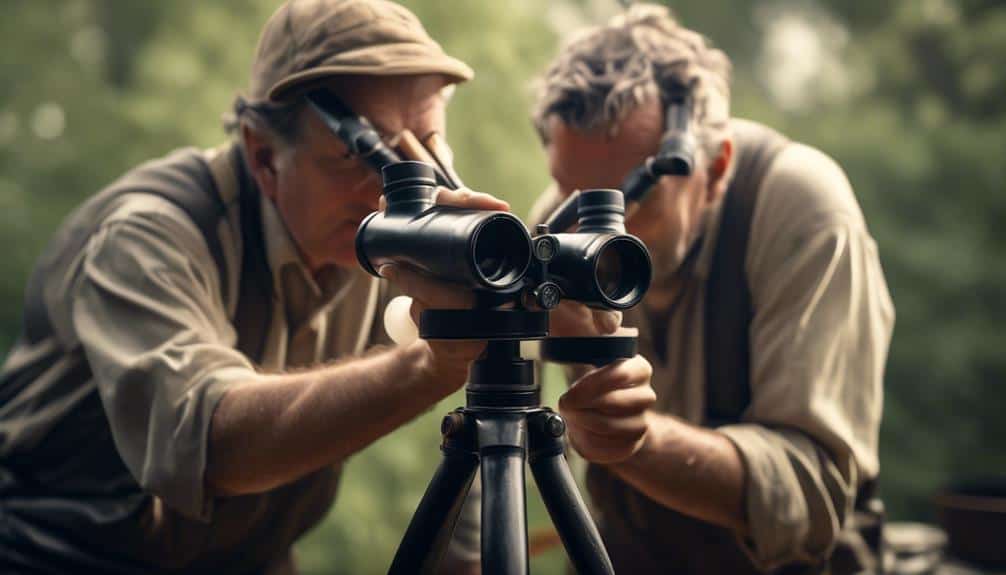
Taking proper care of your birding optics is essential to ensure their longevity and optimal performance. Cleaning techniques play a crucial role in maintaining the quality of your optics.
One common issue birders face is the accumulation of dust and debris on the lenses. To clean them effectively, start by using a soft brush or air blower to remove any loose particles. Avoid using compressed air, as it can potentially damage the lenses.
Next, use a lens cleaning solution and a microfiber cloth to gently wipe the lenses in a circular motion, starting from the center and moving outwards. Be careful not to apply too much pressure, as this can scratch the lens.
Another important aspect of maintenance is protecting your optics from moisture and extreme temperatures. Store them in a dry and cool environment, and use lens caps and covers when not in use.
Additionally, regularly inspect your optics for any signs of wear or damage, such as loose or misaligned parts. Addressing these issues promptly will help prolong the lifespan of your birding optics and ensure that you can continue to enjoy clear and sharp views of your feathered friends.
Frequently Asked Questions
Can I Use Binoculars Designed for Other Outdoor Activities, Such as Hunting or Hiking, for Birding as Well?
Yes, you can use binoculars designed for other outdoor activities like hunting or hiking for birding as well. However, when birding from a boat or in low light conditions, it is important to choose the right binoculars for optimal performance.
What Is the Ideal Magnification for Birding Binoculars?
The ideal magnification for birding binoculars depends on various factors, such as personal preference and the environment. To find the best binoculars, consider factors like field of view, image stability, and ease of use.
Are There Any Specific Features or Technologies in Optics That Are Particularly Beneficial for Birding?
Image stabilization and lens coatings are essential for birding. They enhance clarity, reduce blurriness, and provide a vivid, detailed view of birds in their natural habitat. These technologies greatly benefit the birding experience.
Can I Use a Spotting Scope Instead of Binoculars for Birding?
Yes, a spotting scope can be used as an alternative to binoculars for birding. However, there are pros and cons to using a spotting scope. It provides greater magnification but is heavier and less portable.
How Do Different Weather Conditions, Such as Rain or Fog, Affect the Performance of Birding Optics?
Different weather conditions, like rain or fog, can significantly impact the performance of birding optics. Rain can obstruct visibility, while fog can reduce clarity. Wind can cause instability, and temperature changes can affect the focus and stability of the optics.
Conclusion
After carefully considering the various types and factors involved in choosing optics for birding, it's clear that these tools are essential for any serious bird enthusiast.
The ability to observe and appreciate the intricate details of these feathered creatures is greatly enhanced by the use of high-quality optics.
By investing in the right equipment, practicing effective use, and maintaining it properly, birders can unlock a world of breathtaking beauty and discovery right before their eyes.

